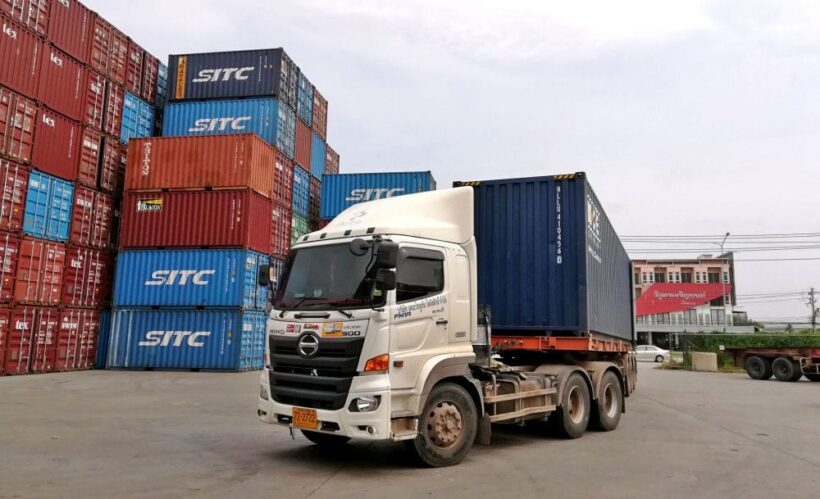Answers demanded over nuclear waste found in Laem Chabang Port

by Pratch Rujivanrom
After Friday’s alert about radio active material being discovered at Thailand’s main sea port at Laem Chabang, authorities have passed on very little news
Now academics are urging authorities to come clean with information about the radioactive waste found at the port and investigate the shipment’s entire route.
The Office of Atoms for Peace (OAP) and the Port Authority of Thailand have said the radioactive waste was safely retrieved from the seaport in Chonburi yesterday (Sunday), but there has been no detailed information about the radioactive material detected inside the export container holding scrap aluminium.
Somnuck Jongmeewasin, a lecturer at Silpakorn University’s International College, noted that the radioactive waste was found last week, but all that’s been revealed is that it has the form of five-centimetre-long, needle-shaped pieces with an unsafe radiation level of 85.83 microsieverts per hour.
According to the Thailand Institute of Nuclear Technology (TINT), the acceptable level of radiation exposure for humans is 1,000 microsieverts per year. Exposure should be limited to 2.73 microsieverts per day or 0.11 per hour.
Somnuck said there was still no information about the kind of radioactive material or its isotope, half-life or origin, so it was impossible to determine the risks to anyone who might have been exposed or the level of radiation contamination in the environment.
“The relevant agencies have to fully disclose the details of this to the public as soon as possible so we can properly deal with it, because radioactive waste is a very severe threat to public health,” he said.
“Even though the radiation is far too low to cause instant sickness, the received radiation, when the level is high enough, will accumulate in the body, which can trigger serious sickness such as cancer in the future.”
The TINT has said that anyone accumulating more than 1,000 millisieverts or being exposed to more than 100 millisieverts per year is likely to eventually contract cancer.
Somnuck also demanded that the agencies involved investigate the background, since smuggling radioactive waste violates several laws. He speculated that this was not the first time such waste had been smuggled through Thai ports. He suspects a connection with the trade in hazardous waste because disused machines containing radioactive parts are shipped to Thai recycling plants and the separated metal materials are transported overseas to be melted down for other uses.
OAP deputy secretary-general Ratchada Hempatavee said little had yet been revealed about the situation because her office, the Customs Department and the TINT must wait for permission from higher up the chain of command to make any announcements.
The three agencies have finished analysing the radioactive waste and removed it from the port, she confirmed.
“We urge the public not to panic because the situation has already been handled, and the Customs Department, which is agency with leading responsibility on this issue, will provide more information when we’re ready,” Ratchada said.
Meanwhile, Laem Chabang Port managing director Pol Sub Lt Montree Lergchumniel concurred that the situation was under control. And despite rumours, he said, the seaport had not been closed.

STORY: The Nation
Latest Thailand News
Follow The Thaiger on Google News:


























